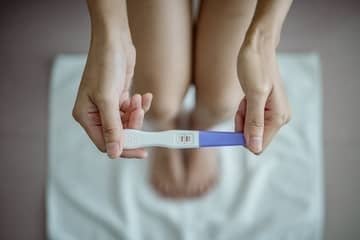
How do I know I'm having contractions?
Considering that contractions are similar to pregnancy - it is an individual matter for each woman, the answer is not completely clear. Nevertheless, how you recognize contractions before birth has its principles. Mothers who have already given birth know exactly how to feel real contractions, but for first-time mothers, recognizing contractions can sometimes be more difficult. False contractions (Braxton-Hicks contractions), which can start appearing in women as early as the 3rd trimester, are a frequent phenomenon. However, there are fundamental differences between them. The contractions themselves are "just" contractions of the muscles of the uterus (the uterus is a muscular organ) and they take place normally during pregnancy, when the uterus enlarges.
Labor contractions take care of the opening of the cervix and facilitate - widen the birth canal. It is therefore a direct preparation of the woman's body for childbirth. In the proper case, the real contractions will appear towards the approaching expected date of birth, that is, roughly from the 37th week of pregnancy. If the real contractions occur earlier, there is a risk of premature birth.
True contractions have their own specific characteristics. The most important is the interval of true contractions, which is shortened. In other words, true contractions have their regularity. The interval of real contractions has a shortening character, that is, contractions first occur every 15 minutes, then every 10, 8, or 5 minutes. One contraction lasts approximately 30 to 90 seconds. Towards labor, the duration of one contraction usually increases. Not to mention that the shorter interval and intensifying contractions are more painful. The pain can shoot into the back, pelvis or thighs. The pain is also not localized and affects the entire abdomen - lower abdomen, which hardens. You can also find out that you are having real and not false contractions by lying on your side. However, the real contractions will not subside and will return.
Women can feel contractions as strong menstrual pains (that's how they describe them most often), but also as contractions of the uterus that don't hurt much, or a dull pain that goes through the spine. However, women's experiences are different. A sign of true contractions can also be other accompanying signs of the coming birth - opening of the cervix, outflow of amniotic fluid, loosening of the mucus plug, the feeling that the child is moving down into the birth canal.
False contractions do not have a certain interval regularity and come at irregular intervals of several minutes or hours. It is about the so-called practice contractions that prepare the uterus and birth canal for real contractions and birth. They do not open the cervix and are not too painful. They can appear already in the 3rd trimester or 2 to 3 weeks before childbirth. Women describe that Braxton-Hicks contractions are not exactly painful, but rather uncomfortable. Abdominal tension, hard abdomen and pain in one place are typical. They often appear, for example, after increased physical exertion or when lifting heavy loads. A warm bath, a glass of cold water (not ice) or lying on your side can help. Then the false contractions usually subside within a few minutes.
Several women describe the first - true contractions differently. Several mothers advise that they cannot be mistaken precisely because of the intervals and nature of the pain. According to the discussing women, contractions can be recognized by pain reminiscent of menstruation, dull pain in the lower back, or abdominal pain reminiscent of diarrhea. If they do not go away even after a warm shower and have a regular interval, it may be true contractions, in which it is necessary to monitor whether the interval is shortening. Most women decided to go to the hospital when the interval decreased to every 10 minutes and the contractions became quite painful. Some mothers recognized real contractions thanks to other accompanying symptoms. Most often, however, they observed a shortening of the regular interval of contractions, which is a clear sign of labor contractions. The other discussants recommend mothers who are before their due date and are not sure that these are real contractions to go to the hospital as a precaution.
Pridať komentár







